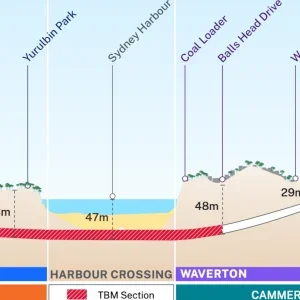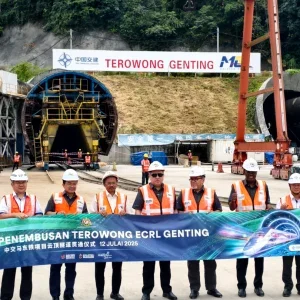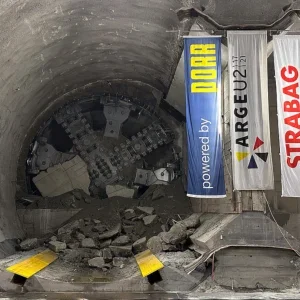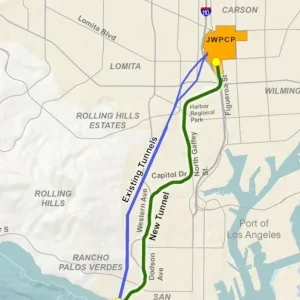Proposals for the first stage of a second high-speed rail line (HS-2) for the UK could involve up to 48km of tunnel excavation in London, according to the feasibility study produced by consultant Arup and which is being discussed with the government and potential financial backers.
Arup said that the tunnels were envisaged to be continuous, twin 24km long tubes, which it said are feasible and deliverable. However, it declined to release further information, such as the breakdown of the expected tunnel layout and likely excavation methods, due to the negotiations underway with possible backers.
The general plan for HS-2 would see the rail link run from the existing terminus at King’s Cross St Pancras station, in north London, to Heathrow airport – in effect making it a rail transport hub.
The tunnels are to be designed with a similar specification to the first high speed link (HS-1) to enable Eurostar-type trains to run between Heathrow and Continental Europe. HS-1 was designed with 7.15m i.d. segmental rings for the bore sections, which allowed additional space for fixed equipment and construction tolerance.
Arup said the capital cost of the first stage of HS-2, including a new station on the Great Western mainline but excluding infrastructure at the airport, is estimated at US$8bn to finish by 2019. The timeline appears to offer major tunnelling works to follow on from Crossrail and Tideway in London, but Arup would not comment on the workload or balance.
The consultant said, though, that the project would be entirely privately financed – being “a new sort of PPP”, as described by project director Mark Bostock, a director with Arup and who played a key role in realising HS-1. Arup sees the government contributing permissions and authorisations, the “champions’ push”.
Confirmation of the advanced stage of the study into HS-2 was given late last year when Arup was launching a book on HS-1, for which it had a catalytic role in making it happen. The feasibility study for HS-2 has been done at the consultant’s own expense and it has invested more than three years’ works with, at times, 40 staff working on the scheme.
Bostock said that HS-1 was able to get momentum because of significant political support championing the scheme. He believes such support will also be vital to realise HS-2.
Arup said its financial model includes raising revenue from the sale of capacity for train services, and introducing the new station and passenger facilities at Heathrow. Further stages of HS-2 would see the high-speed link extended north to the Midlands and beyond (T&TI, January, p12).







